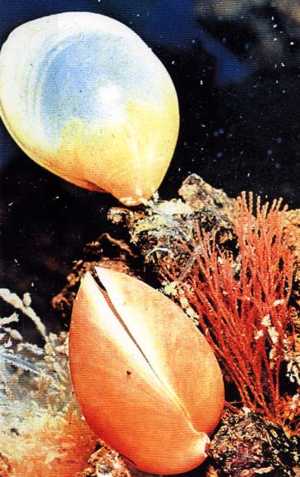
| Metazoa |  |
Brachiopoda |
| Lophotrochozoa | Brachiopoda |
| Page Back | Unit Back | Metazoa | Metazoa Dendrogram | Metazoa References | Pieces | Taxon Index |
| Page Next | Unit Next | Unit Home | References | Dendrogram | Glossary | Time |
LOPHOTROCHOZOA |--Bryozoa `--"Halkieriida" |--MOLLUSCA `--+--Annelida `--+--Tommotiida `--BRACHIOPODA |--Linguliformea `--+--Craniiformea `--Rhynchonelliformea |
Introduction
The Brachiopod Shell Anatomy Ecology Evolutionary History Classification Inarticulate brachiopods Articulate brachiopods Links |

Apart perhaps from the trilobite, no other organism typifies the Age of Invertebrates more than the brachiopod. They were the first animals to loose their mobility and encase their bodies in a solid external shell. Despite a superficially similar appearance to clams, they are actually completely different in their anatomy, belonging to the group known as the Lophophorata, which use a fringe of tentacles known as the lophophore to sweep food particles into their mouths. Brachiopods are rare today, but during the Paleozoic era (especially from the Middle Ordovician period onwards) they absolutely dominated every benthic (bottom-living) marine ecology, their shells accumulating in countless billions. Today their petrified remains are the most common of all fossils.